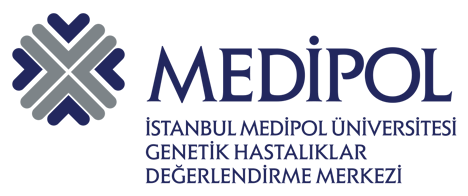World Autism Awareness Day
The United Nations General Assembly declared April 2nd as World Autism Awareness Day. People with autism can lead a whole and meaningful life as an integral part of society by improving their quality of life.
Autism, or autism spectrum disorder (ASD), is a developmental disability that starts before the age of three and lasts a lifetime, harms social interaction and communication, and can cause limited and repetitive behaviors (1). ASD manifests itself with a wide range of comorbidities, often including morphological (macrocephaly), physiological (gastrointestinal and/or sleep problems), and psychiatric (anxiety) conditions (2). Numerous symptoms observed in patients with ASD suggest that ASD has many etiological factors, both genetic and environmental (3).
The prevalence of ASD is not fully known worldwide. However, the number of individuals diagnosed with ASD has increased dramatically over the past 40 years, affecting about one in 60 children. It is known that the incidence of ASD is more common in men than in women (4). There is a positive family history in approximately 20% of ASD cases (5). Genetic etiology has been defined in about 25-30% of patients (6).
The direct and indirect effects of ASD on their families are often a high economic burden extending into adulthood, spreading to many different sectors, including health, education, social care, housing, employment, social benefits, and labor markets (7,8). Despite the high economic and societal costs, early diagnosis (12 to 18 months) and treatment services are essential for patients to improve the symptoms associated with ASDs (9,10). In this sense, genetic tests help determine the cause of the disease in the early stages of life and guide the patient’s medical treatment.
References:
1. Huquet G, Ey E, Bourgeron T. 2013. The genetic landscapes of autism spectrum disorders. Annu. Rev. Genom. Hum. Genet 14:191–213
2. NardoneSElliottEThe Interaction between the Immune System and Epigenetics in the Etiology of Autism Spectrum Disorders. Front Neurosci201610329DOI: 10.3389/fnins.2016.00329
3. Schaevitz LR, Berger-Sweeney JE. Gene-environment interactions and epigenetic pathways in autism: the importance of one-carbon metabolism. ILAR J. 2012;53(3–4):322–340.
4. Center for Disease Control and Prevention: Data and statistics on autism spectrum disorder | CDC. Centers for Disease Control and Prevention Website. Available at: https://www.cdc.gov/ncbddd/autism/data.html Accessed June 24, 2019
5. Elsabbagh M, Divan G, Koh YJ, Kim YS, Kauchali S, Marcín C, Montiel-Nava C, Patel V, Paula CS, Wang C, Yasamy MT, Fombonne E. Global prevalence of autism and other pervasive developmental disorders. Autism Res. 2012; 5:160–179.
6. Schaefer GB, Mendelsohn NJ, Professional Practice and Guidelines Committee (2013) Clinical genetics evaluation in identifying the etiology of autism spectrum disorders: 2013 guideline revisions. Genet Med 15(5):399–407 Erratum in: Genet Med. 15(8):669
7. Buescher AV, Cidav Z, Knapp M, Mandell DS. Costs of autism spectrum disorders in the United Kingdom and the United States. JAMA Pediatrics. 2014; 168:721–728. doi: 10.1001/jamapediatrics.2014.210.
8. Ganz ML. The lifetime distribution of the incremental societal costs of autism. Arch Pediatr Adolesc Med. 2007; 161:343–349. doi: 10.1001/archpedi.161.4.343.
9. BaioJWigginsLChristensenD. LMaennerM. JDanielsJWarrenZKurzius-SpencerMZahorodnyWRosenbergC. RobinsonWhiteTDurkinM. SImmPNikolaouLYeargin-AllsoppMLeeL. CHarringtonRLopezMFitzgeraldR. THewittAPettygroveSConstantinoJ. NVehornAShenoudaJHall-LandeJBraunK. Van NaardenDowlingN. FPrevalence of Autism Spectrum Disorder Among Children Aged 8 Years – Autism and Developmental Disabilities Monitoring Network, 11 Sites, United States, 2014. MMWR Surveill Summ2018676123DOI: 10.15585/mmwr.ss6706a1
10. Yatawara CJ, Einfeld SL, Hickie IB, Davenport TA, Guastella AJ. The effect of oxytocin nasal spray on social interaction deficits observed in young children with autism: a randomized clinical crossover trial. Mol Psychiatry. 2016; 21:1225–1231. doi: 10.1038/mp.2015.162.

